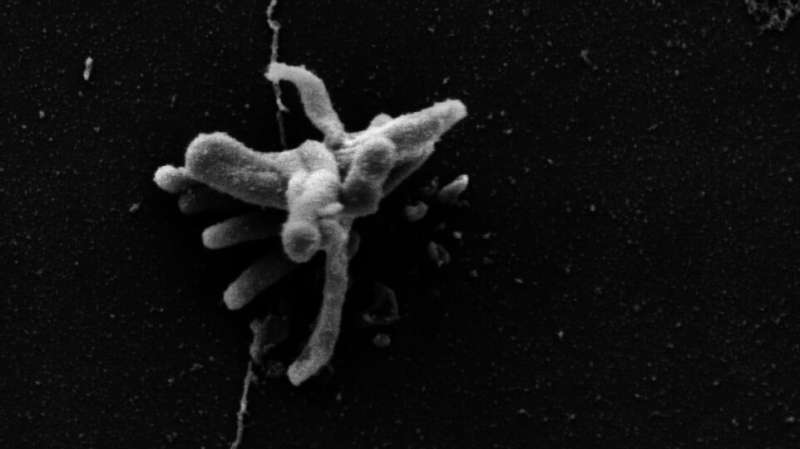Together they stay alive longer: Tuberculosis bacteria persist longer in groups

The tuberculosis pathogen Mycobacterium tuberculosis can protect itself better when combined and thus stay alive longer in the air. This was the result of a study by the Leibniz Research Alliance INFECTIONS, which was published in the scientific journal Scientific Reports on Monday.
The study examined the biophysical properties of tiny particles in the air (aerosols) that contribute to the spread of the pathogen. A successful human-to-human infection is determined, among other things, by the distance that the pathogen can travel through the air before the infectivity decreases. Although individual mycobacteria form smaller aerosols and can thus travel longer distances in the air, interconnected mycobacteria remain alive for longer.
The study is based on earlier results that showed that mycobacteria-infected host cells die from necrotic cell death, as occurs in the lungs of tuberculosis patients. It has now been shown that larger aerosol particles from mycobacterial clusters are produced together with components of the dead cells, which are more viable in the air than individual bacteria. Based on these data, computer simulations of airborne dispersal, which take into account the particle size distribution, can be carried out in the future, which will help to find out which aerosol composition may pose an increased risk of infection for humans.
The study was carried out at the Research Center Borstel, Leibniz Lung Center (FZB) in Schleswig-Holstein and the Heinrich Pette Institute (HPI), Leibniz Institute for Experimental Virology in Hamburg. The Leibniz Institute for Tropospheric Research (TROPOS) contributed its expertise in modeling the dispersion of aerosols such as mycobacterial associations floating in the air to the study.
Currently there is a controversial discussion about the importance of the aerosol dispersion of the SARS-CoV-2 virus for the COVID-19 pandemic. Findings on the aerosol spread of pathogens are therefore of particular interest. Whether parts of the new findings on the tuberculosis pathogen can be transferred to the COVID-19 pathogen is, however, currently completely open, since tuberculosis is transmitted by a bacterium that is significantly larger than the SARS-CoV-2 virus. Viruses are considered to be much more sensitive to environmental influences, as they depend on protection by moisture and dry out relatively quickly.
More information: E. Pfrommer et al, Enhanced tenacity of mycobacterial aerosols from necrotic neutrophils, Scientific Reports (2020). DOI: 10.1038/s41598-020-65781-9





















